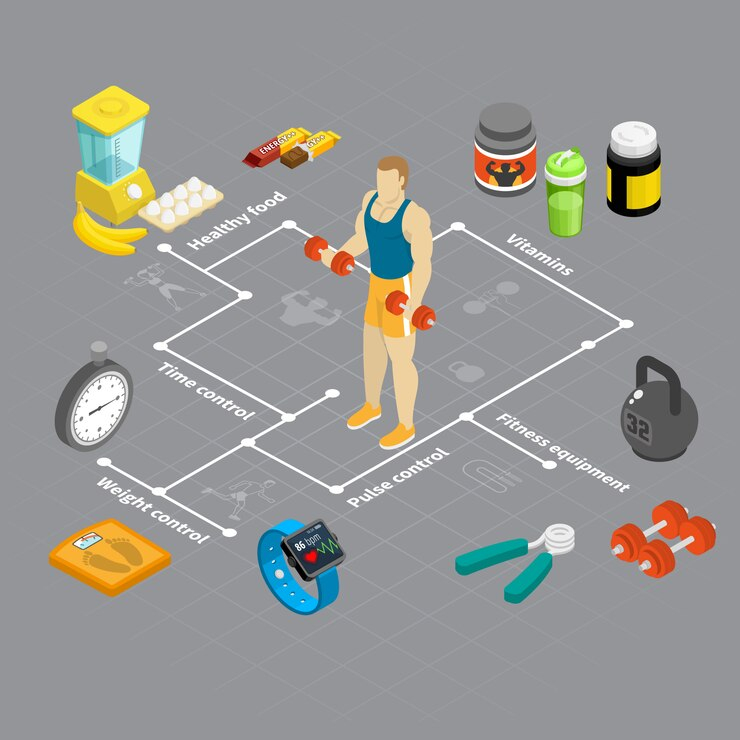Bodybuilding became popular around the world when Arnold Schwarzenegger's chiseled physique inspired men and women to hit the gym. Many bodybuilders use performance-enhancing substances to achieve their goals, but these substances can cause serious health problems. Some even pose a threat to public safety.
Proper rest and recovery are essential for bodybuilders. A healthy diet of nutrient-rich foods is also important.
Stimulants
In bodybuilding, stimulants are often used to increase energy and enhance performance. They may also suppress appetite, which can help with weight loss. However, the misuse of stimulants can have serious health effects. People may take these drugs for non-medical reasons, including getting high and decreasing appetite, which can lead to overdose. They may also inject, snort, or smoke them, which can cause more rapid effects than swallowing a pill. These actions increase the risk of side effects and can cause addiction and withdrawal symptoms.
The most common stimulants in bodybuilding are caffeine, ephedrine, and clenbuterol. These drugs are known to boost metabolism and reduce appetite, but they can also increase blood pressure and heart rate and cause tremors and insomnia. They can also be dangerous to use in combination, as they can trigger a life-threatening heart attack or stroke.
Insulin is a hormone that regulates blood sugar levels. It helps cells in the muscles absorb glucose and promotes muscle growth. When it’s used for bodybuilding, insulin increases protein synthesis and inhibits protein breakdown. Insufficient insulin can lead to low blood sugar (hypoglycemia), which can lead to weakness, hunger, confusion, dizziness, and seizures or coma.
It’s important for healthcare professionals to educate their patients about the use of performance-enhancing substances in bodybuilding and the risks they pose. They can also offer guidance on safe training and nutrition strategies to help people achieve their fitness goals safely and sustainably.
Insulin
Insulin is a powerful anabolic hormone that promotes muscle glycogen storage and limits protein breakdown during exercise. It also enhances blood glucose transport into muscles, promoting carbohydrate replenishment and increasing nutrient availability during intense training. During bodybuilding workouts, some athletes inject insulin to increase their anabolic state and improve their performance. However, using insulin for nonmedical purposes can be dangerous and may result in hypoglycemia. Insulin is available in some countries over the counter, but it’s a prescription drug in others and is tightly regulated by sporting federations. It’s also highly effective for people with diabetes and can be used to manage their blood sugar levels.
Insulin has many other effects, including enhancing protein synthesis and reducing fat cell production. As a result, it’s often abused by non-diabetic bodybuilders to help build muscle mass. It’s important to note that insulin only has anabolic effects if sufficient amounts of amino acids, the building blocks of proteins, are present (7). Insulin does not appear to promote muscle growth by itself, but it can be used in combination with anabolic androgenic steroids (AAS) and growth hormone to increase the potency of these drugs (8).
Insulin can be injected in various parts of the body, but it’s most commonly used in the abdomen to encourage muscle cells to absorb nutrients quickly after training. It’s a good idea to rotate injection sites to minimize inflammation. Repeated insulin injections can cause a small bump or dent at the injection site, which is called lip dystrophy.
Weightlifter injuries
Weightlifters are susceptible to musculoskeletal injuries due to their repetitive and high-intensity training. They are more likely to be injured in the shoulder, hip, and lumbopelvic area than other athletes [17]. Injuries may cause pain, swelling, and restricted movement. In severe cases, a herniated disc can occur. This condition causes heaviness in the legs and arms, pain in the back and neck, and numbness or tingling.
Symptoms of injury may include muscle tears, knee and elbow pain, shoulder pain, wrist sprains, and neck and upper back pain. Weightlifters should be sure to warm up before lifting, focus on proper form, and slowly increase the amount of weight they lift. Taking a break from training is often helpful in preventing weightlifting injuries.
Injuries in weightlifting can be very serious. They may require surgery, which can lead to a long recovery period. Injuries can also affect the performance of a weightlifter, causing them to lose confidence in their abilities and reduce their strength. They can also lead to imbalances in the body, which can increase the risk of future injuries. Weightlifters with chronic or traumatic injuries often develop a fear of re-injury, which can impact their workout routine and cause them to miss workouts. Injuries can cause emotional stress, which can impact a weightlifter’s mental well-being.
Prevention
Bodybuilding is a popular sport that involves intensive physical training to promote muscle growth and strength. While this regimen is incredibly beneficial for the health of bodybuilders, it can also lead to injuries. These injuries are commonly known as weightlifter injuries and can affect a wide range of muscle groups. They can include muscle strains, tendonitis, and rotator cuff injuries.
Prevention is key to avoiding these common bodybuilding injuries. Proper exercise technique and consistent use of equipment will help prevent injury. In addition, rest and recovery are important components of any bodybuilding program. Cool-down exercises and stretching after a workout will help maintain balance in the body and prevent injuries. It is also crucial to drink water during a workout to prevent dehydration.
The dark side of bodybuilding includes the misuse of performance-enhancing substances, which has serious short-term and long-term health consequences for users [61]. Healthcare professionals can play a critical role in preventing substance abuse in the sports by providing education and awareness programs to athletes and the general public. These programs can teach individuals about the risks of using illegal substances and provide information on safe and healthy sports practices.
The most common weightlifter injuries include muscle strains, tendonitis, rotator cuff injuries, and back pain. Taking immediate action can minimize damage and speed up recovery, allowing you to return to training faster and with less pain.
